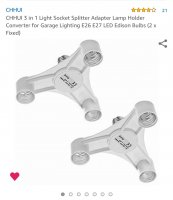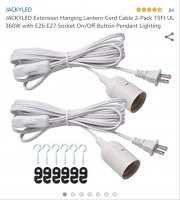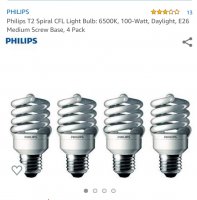For (artificial) light, there is a law that always applies known as the Inverse Square Law. It states that light diminishes exponentially in energy as the distance is increased from the source.
A good example is that you might be getting 1000 PAR Watts at 4" from your light source, but that would change to 250 PAR Watts at double the distance (8"). This law makes it EXTREMELY important for indoor plant growers to get their light source as close as possible to their plants. The amount of light your plant receives is directly related to it's yield/flower density.
The problem: Indoor lamps used for plant cultivation (HID - High Intensity Discharge) give off large amounts of heat, to such a degree that they could cause damage to the plant if put too close.
Indoors, there is an optimum distance/height between the plants and the light source. This distance fully illuminates the whole canopy with direct light from the source, but is as close as possible to the plants for maximum lumen intensity. This will be called the OLH, for Optimum Lamp Height.
Ultimately, to get the best light efficiency from your lamp, you want it at the OLH at all costs. But how can you get it there without causing harm to your plants with the abundant heat?
First, try moving your light to the OLH and see what it does to your plants. If they have no problem, then you're fine. If you have a high output HID, this probably won't be enough.
Next, try actively exhausting your light hood by hooking up a direct exhaust system to the hood, and then move your lamp to the OLH and see if the plants are O.K. If the plants still seemed affected by the heat, then you must add glass to your actively exhausted lamp hood. Glass will absorb/reflect/filter some of the light energy being emitted by the lamp.
The number would seem relatively low, around 2-3% of PAR wattage, but it will effectively filter out almost all of what little UV-B is emmitted by the lamp. UV-B is believed, and has been shown, to have a positive influence on the potency of Cannabis.
Overall, it would be beneficial for one to add glass if needed to keep their lamp at the OLH, due to the all-powerful Inverse Square Law; moving light farther away will greatly reduce the amount of energy being emitted and is reaching your plants (Light intensity is directly related to yield and flower density).
Almost all glass offered today for insertion in air-cooled lamp hoods is tempered glass, which is regular glass with low amounts of impurities. If one was looking for the most efficient glass for their hood, quartz glass will allow the transmission of UV-B, but is not made specifically for light hoods.
And also remember, that if you have a rectangular garden, it is important to position the longest side of the reflector parallel to the shortest side of your garden. (from FAQ by Head Rush)
Additional note: you should periodically inspect and clean your light hood and bulbs, especially after foliar feeding or underleaf spraying for insects. The dust and dirt that collects will definitely decrease reflectivity. Isopropanol alcohol, glass cleaner or water (and a soft cloth) can all be used to remove streaks, dust and spots.
Contributed by: MedMan
There are a number of factors which play a part in the temperature radiated from your bulb, watts, hood design and air circulation for example.
A simple method of testing for temperature is to use the back of your hand; if its too hot for your hand, its too hot for your plants. Good ventilation is the key to getting your light closer to the garden.
Editor's note:
Recommended typical OLH distances:
Flourescentsroximimty
400w HPS: 1 foot
600w HPS: 1.5 foot
1000w HPS: 2 foot
Author: BobbyDigital





